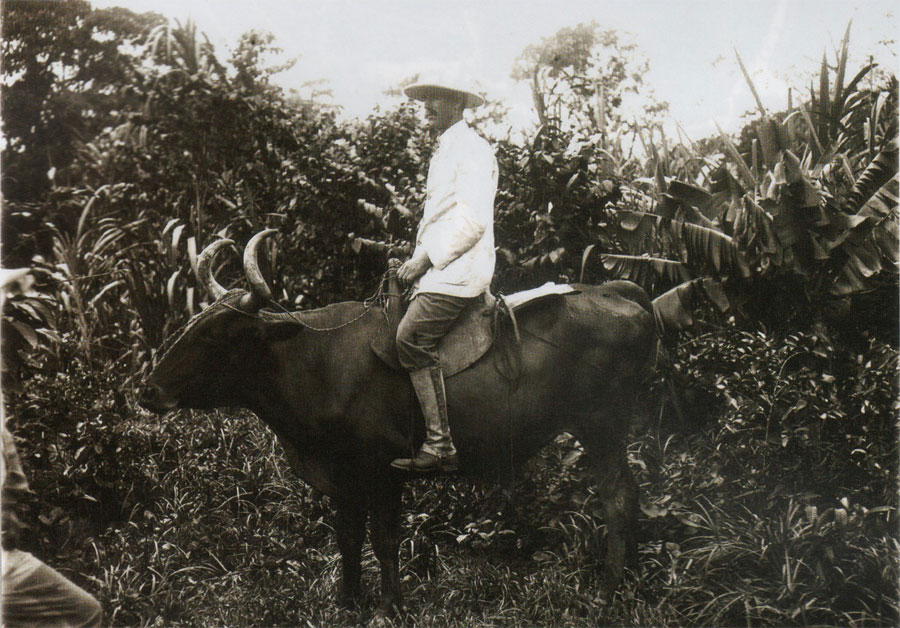
William Curtis Farabee (1865–1925) is one of the great forgotten American explorers and anthropologists. He obtained his Ph.D. from Harvard University in 1903, conducting his first expedition to Peru in 1909. In 1912, at age 48, he arrived at Penn to head the Amazon expedition, a three-year journey up and down the Amazon River and its tributaries, for which the Museum even purchased a yacht (later abandoned because the hull was rotten). Farabee met former President Theodore Roosevelt while in South America, who commended him in his 1914 Through the Brazilian Wilderness as the “greatest living South American explorer.”
During World War I Farabee served as a captain in the Intelligence Corps of the U.S. Army and was personally selected by President Woodrow Wilson as chief ethnographer of the American Peace Commission negotiating the Treaty of Versailles; he was charged with drawing up the cultural maps of the world. And in 1921, President Warren Harding sent him as a special diplomatic envoy to Peru.
Farabee returned to Peru for the Penn Museum in 1922 and 1923. But that would be, in hindsight, a fatal trip. A recurrence of a disease he had contracted during his Amazonian journey interrupted his excavations.
“My dear Dr. Gordon, … “Mr. Farabee is here very ill with inflammatory dysenteria. He took sick in the interior one hundred and fifty four miles away. As there was no physician he had to come here. He rode on horseback fifty-two miles the first day, then went to bed and sent for an automobile which arrived three days later. He has had an awful journey in a Ford car over the trail of the Pampa Huahuari to Ica a distance of one hundred miles where he arrived more dead than alive. Doctor says if he had been two days later he could not have saved his life.”
Sylvia Farabee from Ica, Peru, on June 8, 1922
Upon returning to the United States he underwent over 30 blood transfusions, but finally succumbed in 1925. His obituary appeared in newspapers around the country, titled “Martyr to Science.” In spite of the accolades he received during his lifetime, Farabee remains little known today.
